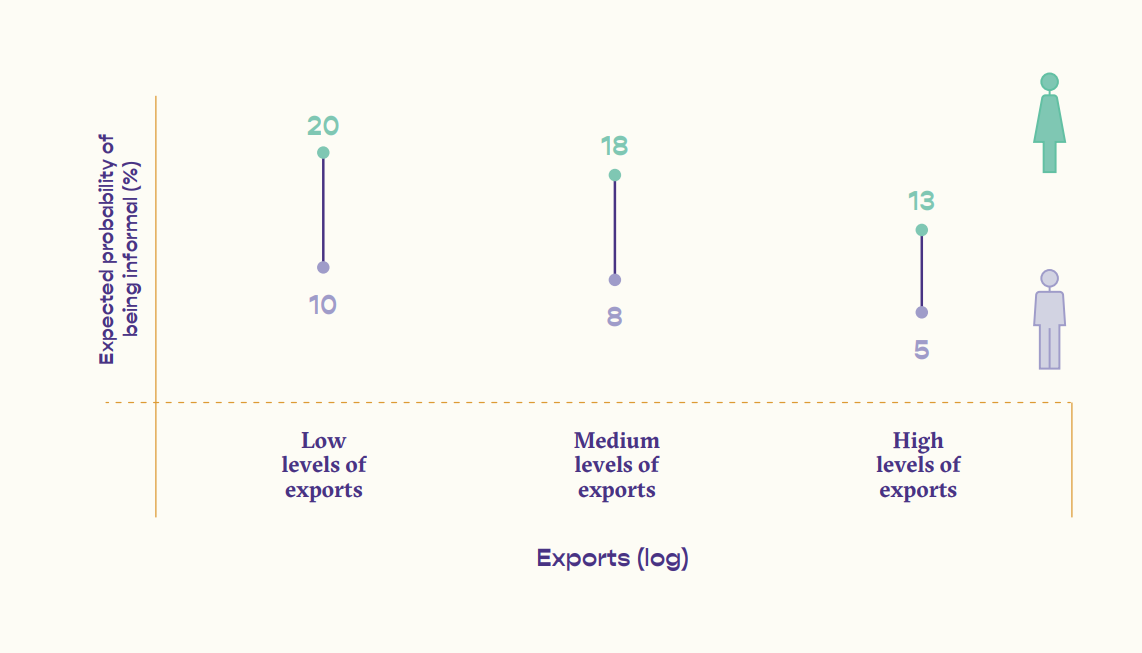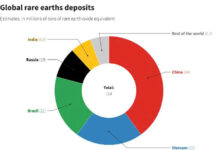Overview
The shift towards services, digital platforms, and value-added production, which is an evolving nature of global trade, is opening new pathways for women to participate and thrive. These trends reduce traditional barriers, allowing women entrepreneurs and workers greater opportunity to connect with international networks, export products, and gain new skills through technology-driven trade.

Collective efforts by governments and international organizations are crucial to sustaining this progress. Initiatives like gender-responsive trade policies, training programs, and inclusive business partnerships empower women to scale their enterprises and improve livelihoods. By aligning trade policies with gender equality goals, countries can ensure that trade benefits are widely shared, transforming women’s potential into a driving force for sustainable growth and inclusive prosperity.
The impact of trade on women in their different roles
Though challenges such as job displacement persist, and a lack of sex-disaggregated data has hindered research, new analysis confirms trade benefits women in several ways:
First, firms that engage in international trade tend to employ more women. In developing countries, women account for about 33% of the workforce in trading companies, compared with only 24% in non-exporting firms. In Viet Nam, exporting enterprises employ 50% or more female workers, contributing to the creation of over 5 million jobs for women – a figure that highlights the significant role of trade in expanding equal employment opportunities.

Average female labor share is higher for manufacturing firms integrated into global trade
Source: Rocha and Winkler 2019, based on World Bank Enterprise Surveys.
Note: The graph shows weighted averages by firm type, using the number of permanent workers as weights. Exporters are firms with an export share (direct or indirect) of at least 10 percent of total sales. Importers are firms with an imported input share of at least 10 percent of total inputs. GVC (global value chain) participants are firms that are classified as both exporters and importers. FDI (foreign direct investment) refers to firms with a foreign ownership share of at least 10 percent.
Moreover, trade helps raise women’s incomes and promote gender economic equality. Doubling manufacturing exports increases women’s wage share in that sector by an average of 5.8 percentage points. At the regional level, the African Continental Free Trade Area (AfCFTA) is projected to raise the incomes of skilled female workers by 4.0% by 2035, compared to 3.2% for men, demonstrating trade’s potential to narrow wage gaps.
Beyond income gains, trade also creates better and more stable jobs for women. In export-oriented sectors, the share of women working informally has fallen from 20% to 13% – a 7-percentage-point decline for women, higher than the 5-point drop for men. This shows that trade integration can open pathways to more formal, secure, and protected employment for women.

Women are less likely to be in informal jobs if they work in trade-integrated sectors
Finally, trade openness enhances women’s economic welfare. Removing import tariffs raises the real income of female-headed households in more than three-quarters of the countries studied, with gains reaching up to 2.5%. This demonstrates that trade not only drives economic growth but also ensures women share more equitably in the benefits of globalization, making it a key engine for sustainable development and gender equality.
How constraints and opportunities shape women’s roles in trade
Women face significant constraints that limit their ability to trade and benefit from it. These barriers include challenges at the border (like higher trading costs and discrimination) and crucial “beyond-the-border” issues. Key constraints include limited access to education, which concentrates female employment in low-skill sectors, and difficulty obtaining finance for trade. Gender bias for domestic tasks also restricts women’s mobility and flexibility.
Three major trends present new opportunities for women to increase their presence in 21st-century trade:
- Servicification: The growing role of services in the global economy increases female labor force participation because services generally employ a higher share of women than agriculture or manufacturing.
- Global Value Chains (GVCs): The fragmentation of production has raised demand for female skills (e.g., in textiles). It also connects MSMEs (many women-owned) to foreign markets via supply chains.
- Digital Technologies: Digitalization can significantly magnify women’s gains by facilitating their access to finance and education, increasing demand for women’s skills, and removing trade barriers and mobility constraints.

Policy responses to promote women’s benefits from trade
Enhancing women’s participation in and benefits from trade requires removing specific trade barriers, such as lowering tariffs and nontariff barriers, and improving access to trade finance. Maintaining a predictable trading environment, underpinned by World Trade Organization (WTO) rules, is also beneficial. Ongoing WTO initiatives related to services, e-commerce, and small enterprises could further empower women in the global economy.
However, trade policies alone are insufficient; complementary policies are essential to improve women’s capacity by enhancing their access to education, financial resources, digital technologies, and infrastructure. Well-targeted labor market adjustment policies are also needed to help women maximize benefits and mitigate risks associated with trade openness.

Ultimately, well-designed strategies to help women benefit from trade depend heavily on the availability of relevant gender-related data. The current lack of sex-disaggregated data has hindered policymakers’ ability to identify trade policy’s differential impacts on men and women. Both the World Bank and the WTO are now leading efforts to address these data shortcomings to enable future research and policy making focused on trade’s impact on gender equality.
Reference: World Bank and World Trade Organization (2020) Women and Trade: The Role of Trade in Promoting Gender Equality. Washing, DC: World Bank. Available at: https://www.worldbank.org/en/topic/trade/publication/women-and-trade-the-role-of-trade-in-promoting-womens-equality






